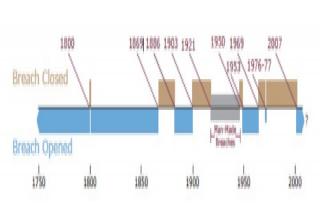A large house on Chappaquiddick inched slowly toward its destination this week across a deep, sandy trench at Wasque point, as early summer fog blew in and out and the ocean continued to eat away at a rapidly eroding bluff nearby.
Work progressed to relocate the 8,300-square-foot home owned by Richard and Jennifer Schifter.






